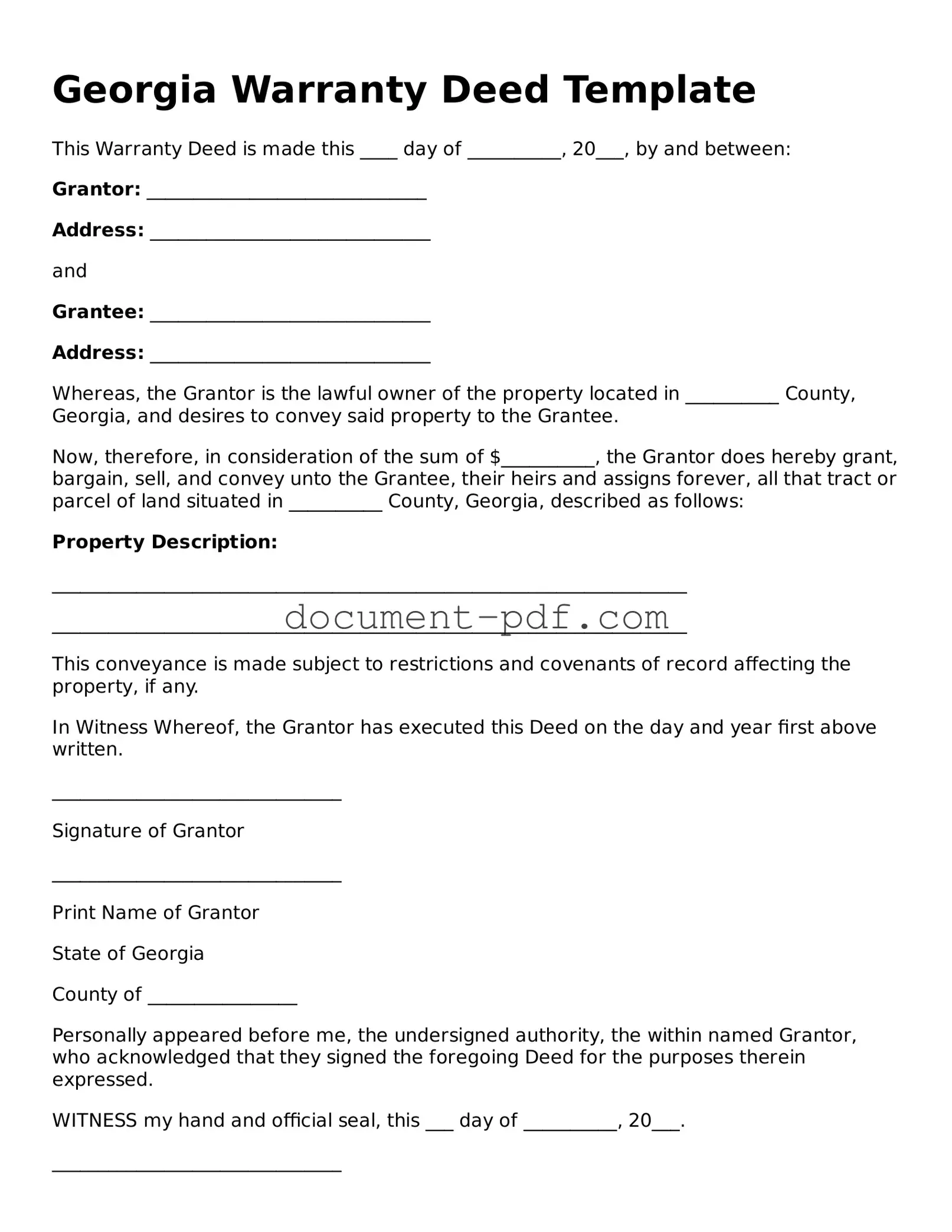Georgia Warranty Deed Template
This Warranty Deed is made this ____ day of __________, 20___, by and between:
Grantor: ______________________________
Address: ______________________________
and
Grantee: ______________________________
Address: ______________________________
Whereas, the Grantor is the lawful owner of the property located in __________ County, Georgia, and desires to convey said property to the Grantee.
Now, therefore, in consideration of the sum of $__________, the Grantor does hereby grant, bargain, sell, and convey unto the Grantee, their heirs and assigns forever, all that tract or parcel of land situated in __________ County, Georgia, described as follows:
Property Description:
____________________________________________________________________
____________________________________________________________________
This conveyance is made subject to restrictions and covenants of record affecting the property, if any.
In Witness Whereof, the Grantor has executed this Deed on the day and year first above written.
_______________________________
Signature of Grantor
_______________________________
Print Name of Grantor
State of Georgia
County of ________________
Personally appeared before me, the undersigned authority, the within named Grantor, who acknowledged that they signed the foregoing Deed for the purposes therein expressed.
WITNESS my hand and official seal, this ___ day of __________, 20___.
_______________________________
Notary Public
My Commission Expires: ______________
